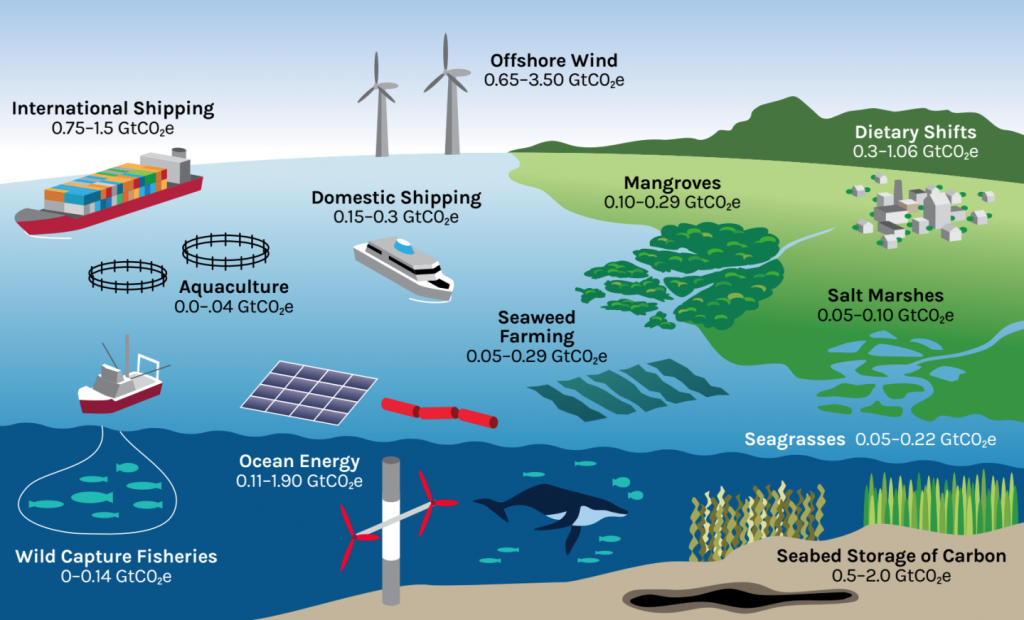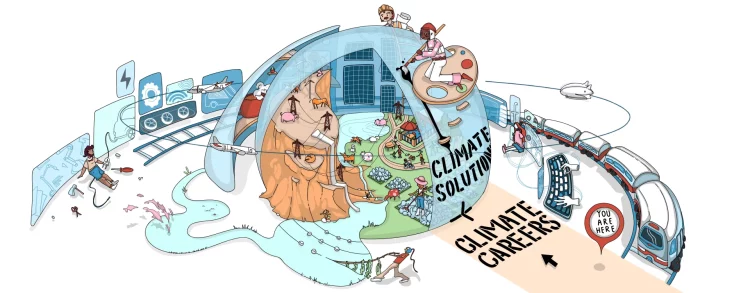Introduction: A New Paradigm for Prosperity
As the planet grapples with rising temperatures, extreme weather events, and shrinking biodiversity, one truth becomes increasingly clear: our traditional economic model, built on endless extraction and consumption, is incompatible with the ecological limits of Earth. Climate change is not just an environmental crisis—it is a systemic economic one. To achieve sustainability, humanity must reimagine how economies grow, how wealth is created, and how progress is measured.
This article explores the economic transformations required to achieve sustainability. It examines green finance, carbon pricing, circular economy models, and the role of policy frameworks in steering the world toward a low-carbon future. Above all, it argues that sustainable growth is not about less prosperity, but about redefining prosperity itself.
1. The Climate–Economy Nexus: Why Change is Necessary
The global economy depends heavily on fossil fuels—coal, oil, and gas—which power industries, transportation, and cities. These same sources, however, emit billions of tons of carbon dioxide every year, trapping heat and disrupting climate systems. According to the International Monetary Fund, fossil fuel subsidies and externalities cost the world over $7 trillion annually, a figure that dwarfs global investments in renewable energy.
Economically, climate change manifests as escalating costs: agricultural losses due to drought, infrastructure destruction from floods, and healthcare burdens from heatwaves. The World Bank estimates that climate change could push 132 million people into poverty by 2030 if unchecked. These figures highlight that economic resilience and environmental sustainability are now inseparable.
2. Carbon Pricing: Internalizing the Hidden Costs of Pollution
At the core of the sustainability transition lies the principle of carbon pricing—assigning a monetary value to greenhouse gas emissions to reflect their true societal cost. This mechanism transforms climate action from a moral choice into an economic imperative.
2.1 Carbon Taxes and Emissions Trading Systems
There are two primary approaches: carbon taxes and emissions trading systems (ETS).
- Carbon taxes directly charge emitters for every ton of CO₂ released, creating a financial incentive to reduce emissions.
- Emissions trading systems, like the European Union’s Emissions Trading Scheme, cap the total allowable emissions and allow companies to trade allowances, effectively creating a carbon market.
Both methods encourage innovation and low-carbon investment. For example, Sweden’s carbon tax—introduced in 1991 and now over $130 per ton—has reduced emissions by 25% while maintaining steady economic growth.
2.2 Global Expansion and Challenges
As of 2025, more than 70 jurisdictions have implemented carbon pricing mechanisms, covering about 23% of global emissions. Yet, implementation remains uneven. Many developing economies fear that such measures could hinder growth or raise consumer prices. A global carbon market with equitable redistribution mechanisms could alleviate these concerns by allowing wealthy nations to subsidize transitions in the Global South.
3. Green Finance: Mobilizing Capital for the Climate Transition
Transitioning to a sustainable economy requires trillions in investment. The International Energy Agency (IEA) estimates that annual clean energy investment must triple to $4 trillion by 2030 to reach net-zero targets. Finance is, therefore, the bloodstream of the green transition.
3.1 The Rise of Green Bonds
Green bonds—financial instruments specifically earmarked for environmental projects—have exploded in popularity. Since the World Bank issued the first green bond in 2008, the global market has surpassed $2 trillion in cumulative issuance. These bonds fund renewable energy, energy-efficient buildings, and sustainable transportation.
Governments, corporations, and supranational institutions are increasingly using green bonds to demonstrate environmental leadership. For example, the European Union’s NextGenerationEU plan allocates hundreds of billions toward climate-friendly recovery projects financed through green bonds.
3.2 Sustainable Investment and ESG
Environmental, Social, and Governance (ESG) investing has transformed global capital markets. Institutional investors now assess not only financial performance but also environmental impact. The world’s largest asset managers, like BlackRock, have pledged to align portfolios with net-zero emissions. Critics warn of “greenwashing,” where companies exaggerate sustainability claims, but ongoing regulatory reforms—such as the EU’s Sustainable Finance Disclosure Regulation (SFDR)—aim to ensure accountability.
4. The Circular Economy: Designing Out Waste
The circular economy represents one of the most promising frameworks for achieving economic sustainability. Instead of the traditional “take-make-dispose” linear model, the circular economy focuses on designing products and systems where materials are reused, recycled, or regenerated indefinitely.
4.1 Circular Design Principles
Circularity is about efficiency, durability, and regeneration. Companies like Philips, for example, lease medical equipment instead of selling it, allowing them to refurbish and reuse components. In the fashion industry, circular design initiatives such as clothing take-back programs and biodegradable textiles are reshaping consumer habits.
4.2 Economic and Environmental Impact
According to the Ellen MacArthur Foundation, a circular economy could generate $4.5 trillion in additional economic output by 2030 while drastically reducing waste and emissions. Moreover, it aligns with job creation—recycling, remanufacturing, and repair industries could employ millions globally.
However, achieving circularity requires systemic change: new business models, consumer education, and supportive regulations. For example, the EU’s Circular Economy Action Plan mandates eco-design standards and targets for recycled materials in consumer goods.

5. Energy Transition: Economics of Decarbonization
The heart of the green economy lies in clean energy. The rapid decline in the cost of renewable technologies has transformed what was once an environmental aspiration into an economic opportunity.
5.1 Renewables Outcompeting Fossil Fuels
Solar and wind energy are now the cheapest sources of electricity in most regions. The cost of solar power has dropped by 90% in the past decade, and wind by about 70%. According to BloombergNEF, renewable power investment outpaced fossil fuels two to one in 2024.
Transitioning to renewables not only cuts emissions but also reduces geopolitical risk, as countries become less dependent on imported oil and gas. The clean energy economy promises millions of new jobs—from installation and maintenance to advanced battery manufacturing.
5.2 The Role of Hydrogen and Storage
Green hydrogen, produced using renewable electricity, could decarbonize industries like steel, shipping, and aviation—sectors where electrification alone is insufficient. Similarly, breakthroughs in energy storage, such as solid-state batteries and grid-scale storage systems, are addressing the intermittency challenges of renewables.
Governments are incentivizing this shift through subsidies, tax credits, and public-private partnerships, with the United States’ Inflation Reduction Act and the EU’s Green Deal Industrial Plan leading the way.
6. Policy Innovation and Just Transition
Economic sustainability requires more than market mechanisms—it needs strong policy frameworks and social equity. Climate policies must ensure that the transition to green economies does not leave vulnerable populations behind.
6.1 The Concept of a Just Transition
A “just transition” ensures that workers and communities dependent on high-carbon industries receive support during the shift to cleaner alternatives. This may include retraining programs, income support, and regional investment funds.
For example, Germany’s coal phase-out plan includes €40 billion in transition aid for affected regions, ensuring that climate policy also serves as social policy.
6.2 Green Fiscal Policies
Governments can use fiscal tools—such as carbon revenues, green subsidies, and progressive tax reform—to drive sustainability. Redirecting fossil fuel subsidies (currently over $1 trillion annually) toward renewable energy and public transport would yield immense climate and social benefits.
Furthermore, national budgets should integrate “green accounting”, measuring not just GDP growth but also natural capital and ecosystem health.
7. Global Trade and Green Industrial Policy
Trade policies can either accelerate or hinder the climate transition. A growing number of nations are adopting carbon border adjustment mechanisms (CBAMs)—tariffs on imported goods based on their carbon footprint—to prevent “carbon leakage.”
Meanwhile, green industrial policies are reshaping the global economic landscape. China’s dominance in solar panel production, Europe’s battery strategy, and the U.S. push for clean manufacturing are driving a new era of climate-oriented competitiveness.
However, there is a delicate balance between fostering domestic green industries and avoiding green protectionism. The global economy must collaborate to ensure fair and efficient decarbonization.
8. Measuring Progress Beyond GDP
Traditional economic metrics like Gross Domestic Product (GDP) fail to capture environmental and social wellbeing. A sustainable economy requires new indicators that reflect ecological limits and human welfare.
Examples include:
- The Genuine Progress Indicator (GPI), which adjusts GDP for environmental degradation and inequality.
- The Doughnut Economics model, which envisions a “safe and just space” for humanity between social foundations and planetary boundaries.
- The United Nations’ Human Development Index (HDI), now being expanded with climate resilience indicators.
By redefining growth, societies can align prosperity with sustainability.
9. Innovation Ecosystems: Entrepreneurship for Climate Solutions
Green entrepreneurship is flourishing as start-ups develop new solutions in energy, agriculture, and materials. Venture capital investment in climate tech surpassed $60 billion in 2024, with breakthroughs in carbon capture, bioplastics, and precision agriculture leading the charge.
Universities and incubators are fostering ecosystems that connect research with real-world applications. Governments can accelerate this momentum by supporting R&D, offering tax credits, and reducing bureaucratic barriers to innovation.
10. Conclusion: The Economics of a Livable Future
The path to sustainability is not a retreat from growth, but a redefinition of it. Economic systems must evolve from extractive and wasteful to regenerative and inclusive. This transformation requires the alignment of policy, finance, technology, and culture toward a shared goal: prosperity within planetary boundaries.
By pricing carbon, investing in green finance, embracing circularity, and ensuring just transitions, humanity can build an economy that thrives without sacrificing the Earth that sustains it. The challenge is immense, but the rewards are greater—a stable climate, equitable societies, and a truly sustainable prosperity.











































